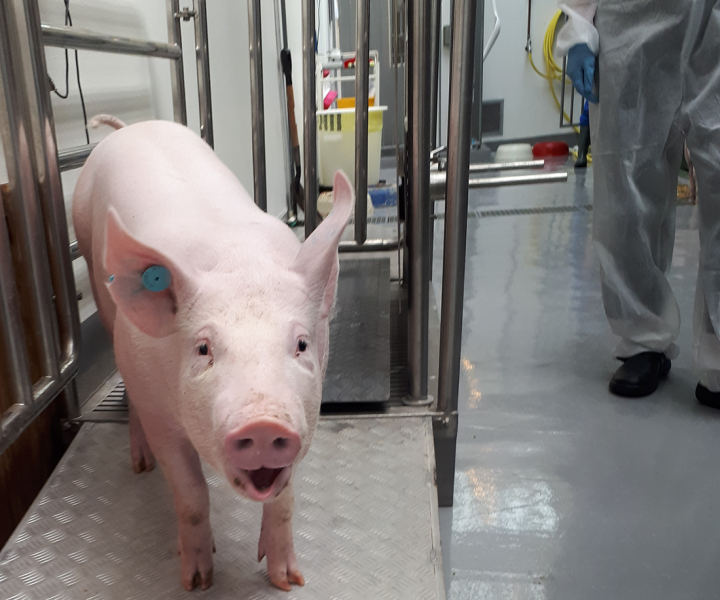Pig studies aim to inform dementia treatments
Pigs with genes linked to microvascular disease offer critical insight into how the condition affects humans.

The domestic pig, most familiar as a farmyard animal, has long been an unlikely hero of medicine.
Pig heart valves have been transplanted into humans for many years, and insulin recovered from pigs was used to treat diabetes until the late 1980s.
More recently, advances have involved transplants of the heart of a genetically modified pig, and a pig kidney, into human patients.
The animals’ contribution to medicine is moving beyond organ donation and into scientific research.
Pig studies could enable scientists to better understand the biological processes involved in human diseases, and point towards potential treatments. They offer insights into brain vascular disease that could not be obtained from conventional lab rodents.
Previous research with pig models have informed management of heart disease and heart attacks.
A team involving scientists from the Roslin Institute, led by St George’s University of London, is to develop and study pigs affected by microvascular disease.
This condition is characterised by damage in small blood vessels, which affects the brain, heart and other organs, and is widespread among older people. In the heart it can cause the painful condition angina, and in the brain, small strokes and dementia.
Their research, supported by the British Heart Foundation, could bridge a gap in understanding the condition and testing potential treatments before moving to human trials.
Commonalities between species
Pig cardiovascular and immune systems are similar to those of humans. Critically for this study, pigs also have a large brain with extensive white matter, which in people is particularly vulnerable to microvascular disease. These common characteristics between pigs and humans could advance our ability to understand and treat human diseases.
Dr Simon Lillico of the Roslin Institute will lead development of the study animals. ‘Large animals’ size and physiology is very valuable for carrying out studies of human disease. The clinical interventions we make in studying disease in large animals are similar in scale to those carried out in human medicine, and these animals have similar brains and blood vessels to our own, leading to results that we anticipate will be meaningful.’
Dr Atticus Hainsworth, a stroke and dementia scientist at St George’s University of London, will lead the research. ‘The option of studying microvascular disease in pigs is highly promising, as they have a human-like cardiovascular system and other biological systems resembling those of humans.’
The research collaboration, involving St George’s Hospital, the Universities of Bristol and Glasgow, and King’s College London, is primarily planned to support understanding of how microvascular disease affects the brain. Subsequent studies will address its effect on the heart, which can lead to angina, and the function of other major organs, such as the lungs, kidneys or eyes.
Reproducing disease
The team will develop pigs carrying a gene called EDN1, which produces a protein causing small vessel damage. Production of the protein will be governed through drugs administered in the pigs’ diet, enabling the team to replicate conditions seen in the human form of microvascular disease.
MRI scans will seek to investigate the impact of damage on the brain. In addition, the team will assess cardiovascular functions such as blood pressure, heart rate, and cardiac output.
Analysis following the experiment will seek to explore the impact on the brain’s tissue, especially white matter, where damage owing to microvascular disease occurs in humans.
Insights from the study are expected to bridge the gap between understanding of the disease gained from rodent studies and medical knowledge of impacts in human patients.
Pre-human trials
The pig is a stepping stone between rodents and humans. Pig-based models will give us confidence in our approach to identifying potential useful treatments, before going into human trials to test them.
Pigs for the study will be developed at the University of Edinburgh’s Large Animal Research and Imaging Facility Study. Analysis will be carried out by the UK-wide team.
Good understanding of pig management and welfare, gained from the animals’ longstanding use in agriculture, supports their suitability as a large animal model for human disease.
Large animal models such as pigs are transformative in limiting the risks associated with drug testing ahead of clinical products reaching patients. That level of insight requires a large animal model, and we hope our study will prove valuable in developing this much-needed method of understanding human disease.


